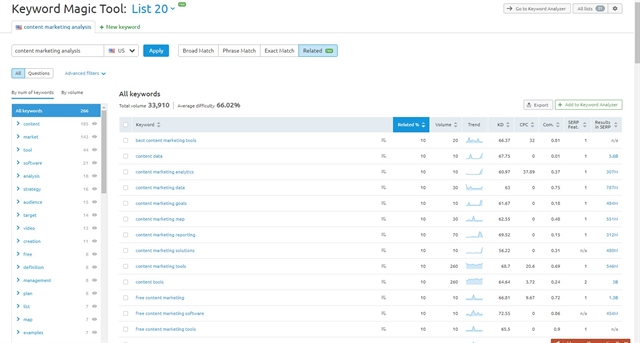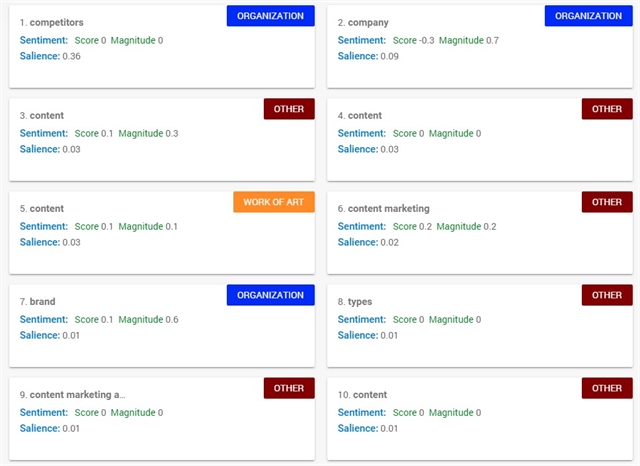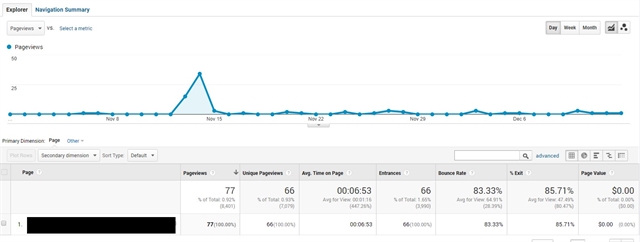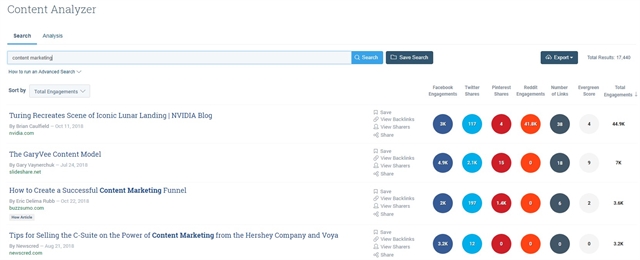All content marketers know they’re supposed to develop “high quality, unique, comprehensive content.” Unfortunately, no clear definition for “high quality, unique, comprehensive content” exists at Google, Bing, or even dictionary.com.
Fortunately, we can use some data points to analyze and evaluate our own content and that of our competitors. We might never pin down a definition of “high quality, unique, comprehensive content,” but we can determine whether our content is likely to reach and resonate with our target audience.
Do your Research
Does this sound familiar? You or your client have a great idea for a blog. You whip it up, publish it and… crickets. This happens a lot to content marketers, who too often choose topics by the “sample of one” method.
Let’s stop doing that.
Your client might insist that the world eagerly awaits a blog favorably comparing your client company’s screwdriver to competing screwdrivers. Don’t take your client’s word for it. Before you waste time and money on a subject of interest to you or your client, find out whether your target audience cares. Are they, in fact, searching for your pet topic? Do some research.
Find out with such tools as Semrush, Moz, Answer the Public and Keyword Planner. I like Semrush and Answer the Public. Still not a fan of the new-ish Keyword Planner. And I still get a kick out of the Answer the Public guy. But that’s just me.
Go to your tool of choice and type in the queries you think your audience or buyer persona would use to find your content. Then look at the number of searches for this phrase and for the related searches.

Do the queries that appear relate to your intended content topic? Are people really searching for this stuff? How have these searches changed over time? Positive answers to these questions mean that your blog topic is worth pursuing.
Bonus tip: Don’t get too hung up on the number of monthly searches for a specific term. These estimates vary from tool to tool and industry to industry. If your company is one of three manufacturing whatchamacallit widgets, and “only” 10 people search for them monthly, it’s still worthwhile to target those 10 searchers. After all, given their familiarity with your product and company, they’re likely highly qualified prospects.
Evaluate Your Content
New Content Pieces
If you’re writing new original content, review what your competitors are already saying on that topic and evaluate the response.
You can use Semrush to find out who ranks for specific keyword or query. Alternatively, you can conduct a simple search for your targeted keyword or query and see what Google and other search engines return. With Google search, use an incognito window in a browser you don’t often use to avoid personalized results.
Once you’ve identified your top competitors, begin your competitor analysis. Find out how they’re earning rankings and how readers are responding.
Semrush can help you determine what keywords the piece of content ranks for and the estimated organic traffic it attracts. This is a good “gut check” of the content’s overall success.
I also like using Google’s Natural Language Processing Tool to determine how Google interprets content. Simply copy and paste the competitors’ content piece in the free tool.

The two tools don’t always line up. If they’re close, though, assume that the piece is reaching its intended audience and performing well.
Existing Content Pieces
The ongoing improvement and evaluation of existing content ranks among the most important – and overlooked -- aspects of content marketing. If you wrote great content in 2016, updating and republishing it is easier than starting from scratch.
First, review your analytics data to see how the piece of content has performed. Check the traffic, how long people stay on the page, and where they come from. If the piece has been on your site for a while, see how its metrics have changed over time.
Identify and try to understand deficiencies. If, for example, a blog post once drew lots of organic traffic but no longer does, figure out why. In the example below, the GNLP tool would be especially helpful in shining light on how search bots view the piece.

If you’re using Google Analytics as your analytics tool, you should also use Google Search Console to evaluate the content. Look at the queries driving traffic to your page. Are they relevant to the content? Have they gone up or down over time?
Email marketing metrics play an important role in the evaluation of your content. If you send regular email blasts, review your open and click-through rates to determine the reaction to a content piece. This can reveal the subjects of greatest interest to your audience.
Once you have a good idea of how your content performance has changed over time, you can use third-party tools to conduct a content marketing competitive analysis.
Social Media Counts
Social media can shed light on how users respond and react to a content topic. Social media also indicate the appetite for a specific topic, something search-focused tools might miss.
If you’re evaluating existing content, tools such as Facebook Insights effectively show how your social audience reacts to a topic.
Bonus tip: Use the Pages to Watch feature within Facebook Insights to spy on your competition. This will let you see your competitors’ Facebook engagement rates, including post-specific likes, shares, etc.
Use BuzzSumo to focus on a new content piece or find out how a competitor’s content performed. It tells how many shares, likes, and other engagements a piece of content had within the social ecosystem. This helps you gauge potential reactions to content you are considering.

Technical Counts, Too
We all zero in on content performance and rankings. That’s fine, but too many of us overlook technical SEO. It impacts content marketing significantly, especially when you’re evaluating and reconsidering an update of existing content.
Technical Page Structure
The misuse of an H2 tag won’t break your #1 ranking, but do attend to correct basic HTML on your content. For example, your page should have just one H1. This makes it easier for bots to crawl and interpret the content on your page.
The best way to evaluate your on-page technical elements and the on-page technical elements of your competition is Screaming Frog. This free tool crawls your whole site (up to 500 pages) and identifies missing or duplicate H1s, multiple H3s, etc. It also highlights missing page titles and meta descriptions. These little things are usually easy to fix and often make a big difference.

Does Google Know You’re Out There?
In addition to showcasing search queries, Google Search Console sheds light on how Google Bots find (or don’t find) your blog. Use the Index > Coverage report to find out how many pages Google has deemed valid, and how many it excluded. It also tells you why pages are excluded, so you can address the issues.
Mobile usability plays an important role in ensuring that Google can find your content. Now that Google is primarily using its mobile-first algorithm, mobile display issues cause ranking errors.
Consider Frequency & Sales Funnel
How often does your competition publish content? How often do they create new content? Weekly, bi-weekly, monthly? This knowledge, coupled with the reception their content receives, will help you determine how often you should develop and publish content.
How does your competition use its content? As you read through their blogs, eBooks, etc., consider the purpose of each piece. What’s the Call to Action? Who is the target audience? This knowledge can be extremely helpful in developing your own sales funnel and determining how your content marketing strategy fits in that funnel.
Okay, now you can write
Congratulations! You’ve completed your content marketing analysis. You should have enough data points to help develop content likely to resonate with your target audience, generate traffic and increase brand awareness. Be sure to make that content “high quality, unique, and comprehensive.”
You’ll know it when you see it. It will just feel right.
Just kidding. You’ll know it when the data rolls in.